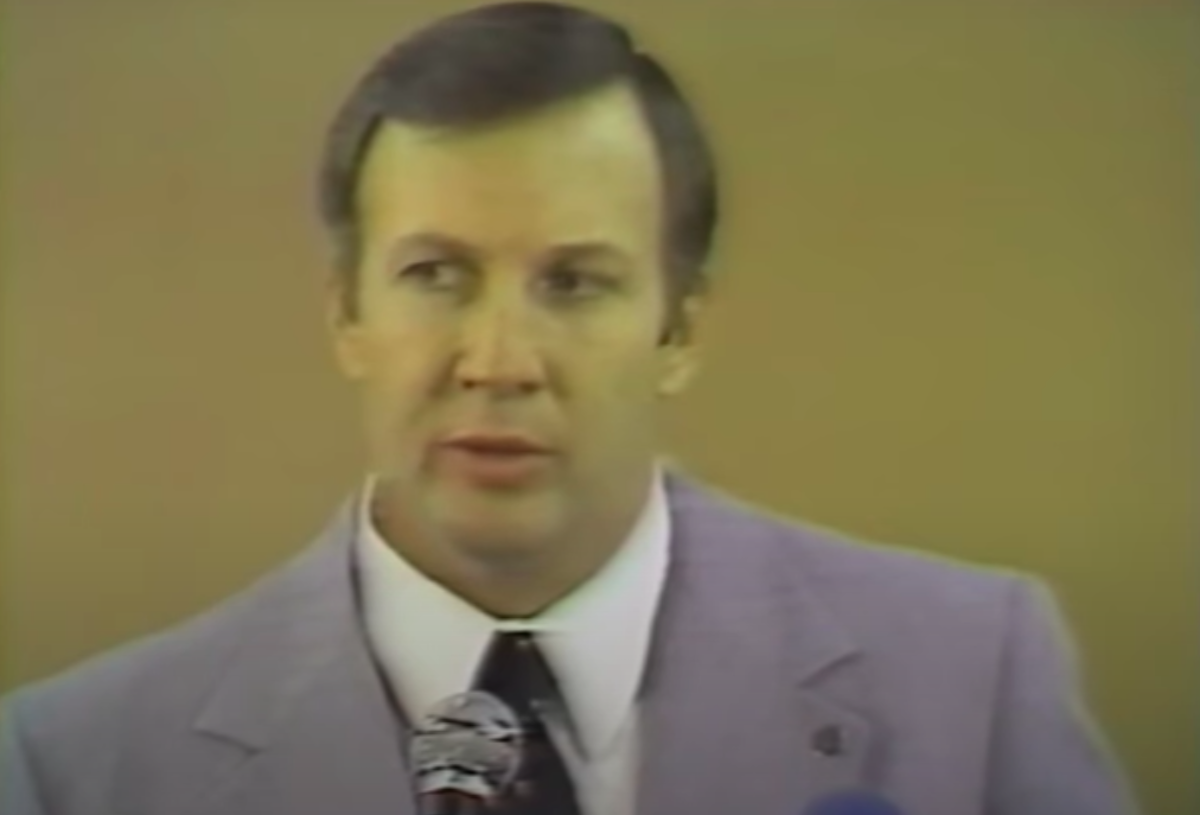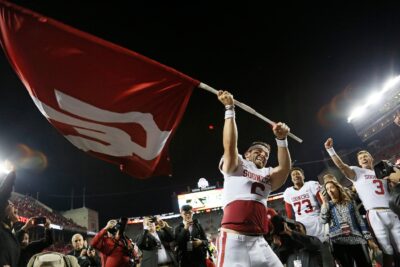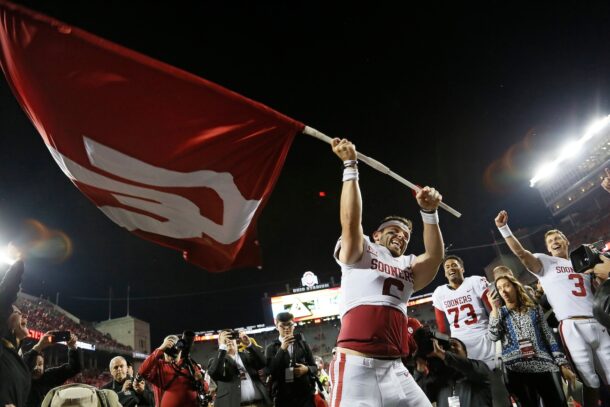
What was it like to cover Pat Dye? SEC media greats tell their favorite stories of that unique experience
Twenty years before I entered the real world as a recent college graduate, Pat Dye coached his last game at Auburn.
Unfortunately, I didn’t have young reporter experiences at WBMG-CBS42 in Birmingham like Jim Dunaway, who remembered the first time he covered a college football game. In 1988, after an Auburn win against Kentucky in the trailer next to the locker room, he froze when he finally got to ask Dye a question (Dye told him to just tap him on the leg when he remembered his question).
I wasn’t a reporter at the Greensboro News and Record in the late 1970s like Tony Barnhart, who remembered thinking that the East Carolina coach was ready for the big time.
I wasn’t at ESPN to report from the sidelines in the 1980s like Tim Brando, who remembered asking Dye about the status of troubled Auburn quarterback Jeff Burger before a 1986 game against Mississippi State and getting a response of, “well, he’s my quarterback. He’s had some problems. We’re dealing with them.”
(Trust me when I say that quote is much better with Brando’s spot-on impression of Dye, which took decades to master.)
After Dye’s death was announced Monday, I caught up with Barnhart, Brando and Dunaway, all of whom have plenty of memories of covering Dye. And perhaps equally important, all of them stayed close with Dye long after his days as Auburn coach came to a sudden end in the fallout of an NCAA investigation in 1992.
They provided insights on an interesting subject that I, admittedly, couldn’t answer. What was it like to cover the Auburn legend?
“The most emotional football game I’ve ever attended”
Dec. 2, 1989. Barnhart still remembers it like yesterday.
On assignment with the Atlanta Journal Constitution, he got out of his car and walked up to Jordan-Hare Stadium a couple of hours before the 1989 Iron Bowl. Tens of thousands of fans were ready for a special Tiger Walk. Grown men were crying. The sight of Auburn finally playing the Iron Bowl at Jordan-Hare Stadium for the first time fueled what was, as Barnhart put it, “the most emotional football game” he’s ever attended.
That happened, of course, because Dye made it happen. The Auburn coach/athletic director got the Alabama administration to agree to move the storied rivalry away from Legion Field in Birmingham to Jordan-Hare Stadium. Auburn’s home games in the rivalry would be played on The Plains every other year.
Shortly after Dye took over at Auburn, Alabama coach Paul “Bear” Bryant famously told him that the Crimson Tide would never play at Auburn if he had any say in it, and that they had a contract that ran through 1988. Dye responded by saying “well, we’ll play ’89 in Auburn.” Six years after Bryant’s death in 1983, that’s exactly what happened.
And not only did Dye deliver on his word to bring the Iron Bowl to Auburn in 1989, he led the Tigers to a 30-20 victory that ended undefeated Alabama’s chance at a national title.
A camera was there to capture Dye’s unforgettable postgame speech:
“I wouldn’t swap this year for any year I’ve been at Auburn. I wouldn’t swap it men ’cause I’ve watched you struggle, and I’ve watched you wrestle with them angels….and I’ve watched you grow up and become men…I watched you become men”-Pat Dye
November 6, 1939-June 1, 2020 pic.twitter.com/22C0790HE2
— Boosky (@sheabooskyy) June 1, 2020
Access to Dye was never lacking at Auburn. Cameras were allowed into the locker room after games. There used to be a weekly Sunday show that began with a clip of Dye addressing the team, win or lose.
“He was as good after a loss as he was after a win because of the emotions,” Dunaway told SDS. “So many times, he’d break down into tears with his players. He just loved them so much.”
The redheaded stepchild
Before Dye coached in an Iron Bowl, he had to be different than Bryant. He spent 9 seasons as an assistant on Bryant’s staff at Alabama from 1965-73. In order to carve out his own path at Auburn, there had to be a transparent approach.
“He knew that at Auburn, you were the redheaded stepchild of the state. You had to be more accessible than Coach Bryant was,” Brando told SDS. “That isn’t to say he was gonna turn into Hank Stram and he was gonna put a microphone on during the game, but he did accept invitations for 1-on-1 interviews and was as accommodating as a big-time coach could possibly be in that period.”
“They were the opposite of what Alabama was. Alabama was the proven program and you had to jump through a lot more hoops to do interviews back then,” Dunaway said.
Dunaway experienced Auburn’s different media policy firsthand. Weeks removed from graduating from college, Dunaway was fired up to cover his first college football game in 1988. Auburn opened the season with a home game against Kentucky, so he made the 2-hour drive from Birmingham to Jordan-Hare Stadium … and got there 3.5 hours early.
He was the first media member to arrive in the press box, where he met longtime Auburn Sports Information Director David Housel. Housel showed the young reporter to his seat and offered to bring him down to the Auburn locker room. Dunaway saw where Auburn conducted Dye’s postgame interview in the aforementioned trailer next to the locker room, and they made 1 more pitstop.
“(Housel) goes, ‘Oh, Coach Dye is already in his office. Let me introduce you,'” Dunaway said.
There was Dye, getting ready for the 1988 season opener, and more than willing to shake the hand of a young reporter covering his first college football game. That’s how open Auburn was with Dye.
Even when he had a decade of experience under his belt with 4 SEC championships in the previous 8 years, that policy remained true. Every Tuesday during the season, Dye conducted his weekly press conference. Whether it was Dunaway or Rece Davis, who was the station director at WRBL in Columbus, Ga., there were 7-9 local TV stations who got 1-on-1 time after the press conference to interview the Auburn coach.
“No way it happens now. It just didn’t happen for local media even in 1991,” Dunaway said, “except at places like Auburn.”
Dye was the exception to the rule when it came to transparency. It didn’t go unnoticed by the people who covered him. Transparent and approachable were 2 words that came to define Dye’s reputation with the media.
“Inner Satisfaction”
Pat Dye after the 1986 Iron Bowl.#wareagle pic.twitter.com/kBmsZipIuA— Josh Dowdy (@heartofauburn) June 2, 2020
When Dye was under investigation by the NCAA in 1991, he still did interviews. It was never “I can’t comment on that” like most coaches are advised to do. As Dunaway said, “he was an open book. Ya never felt like he was BS-ing you.”
“That’s the great thing about Pat Dye. He wasn’t gonna lie to you. He was gonna tell it like it was,” Barnhart said. “He knew having played in this conference and having coached with Bear Bryant for 9 years, he knew what it was all about. Just an incredible personality.”
And not surprisingly, that’s what allowed Dye to entertain the masses in his next phase of life.
Made for media
Brando was working for ESPN when he watched Auburn play Syracuse in the Sugar Bowl at the end of the 1987 season. Surrounded by Syracuse grads at ESPN, Brando heard all of their complaints when Dye made the controversial decision to kick a game-tying field goal in the final seconds instead of going for the win (Dye also received over 2,000 ties from Syracuse fans after the game). It meant that Syracuse had a tie instead of a perfect season, which could have been the difference in winning a national title.
(Go to the 23:42 mark to see Dye’s postgame interview:)
To Brando, though, the move made perfect sense. He knew that Dye was playing for the South, and his focus was on shifting the power balance away from the northern schools. After that game, Dye confirmed exactly what Brando thought.
“(Dye) said, ‘Tim, it felt like a dub-ya. It felt like a dub-ya,’” Brando said in his best Dye imitation. “He said, ‘Syracuse was not the best team in the country. We was gonna make sure people knew that.’”
There was no such thing as “politically correct” for Dye. Even though he made Auburn his home and he stayed close to the program after his resignation, he wasn’t afraid to get in front of a microphone and call out the Tigers if he felt they needed a little extra motivation. Between “The Coach Pat Dye Show” that he hosted in his later days and regular appearances with Paul Finebaum, Dye was never afraid to speak his mind.
In 2002, Dye infamously said during an interview on Finebaum’s show in Birmingham that he didn’t think “Georgia was man enough to beat Alabama” that week. It was an eyebrow-raising comment from Dye, who was an All-American at Georgia. Bulldog players like quarterback David Greene admitted it was as strong as any bulletin board material as they had ever received.
“That one just blew up,” Barnhart said. “I said, ‘Don’t y’all understand? Pat is a Georgia grad. He would love to see Georgia beat Alabama. He’s planting that seed like he’s still coaching.’”
Sure enough, that was exactly the case. And sure enough, Georgia went on to beat Alabama 27-25.
Just how he drew it up.
Dye was subject to criticism himself for publicly defending troubled players, which Brando said he “sometimes he did to a fault.” But that unfiltered, unapologetic style ultimately made Dye more likable as time passed, especially at Auburn, where they named it Pat Dye Field at Jordan-Hare Stadium in 2005.
When news of his death hit the masses, Dunaway, who now hosts “JOX Roundtable” on WJOX-FM in Birmingham, said that they had several Alabama fans call in and tell them that they never heard of someone who didn’t like Dye. That’s saying something.
“It was hard to stay cynical of Pat Dye once you got to know him. The ones who were most cynical were the ones who never covered him,” Brando said. “If you were around him, it was almost impossible not to like him.”
Fans will remember him as the person who helped build Auburn into what it is today. Without him, one of the greatest rivalries in all of sports could still have a much different feel. He was the guy who famously replied “60 minutes” when asked at his introductory press conference about how long it’ll take to beat Alabama. Auburn fans will always be grateful that he told Bo Jackson that he’d have a chance to play in his first year on The Plains … and boy did he ever.
Dye was indeed an open book. An unfiltered, unapologetic, unforgettable open book.
Connor O'Gara is the senior national columnist for Saturday Down South. He's a member of the Football Writers Association of America. After spending his entire life living in B1G country, he moved to the South in 2015.







